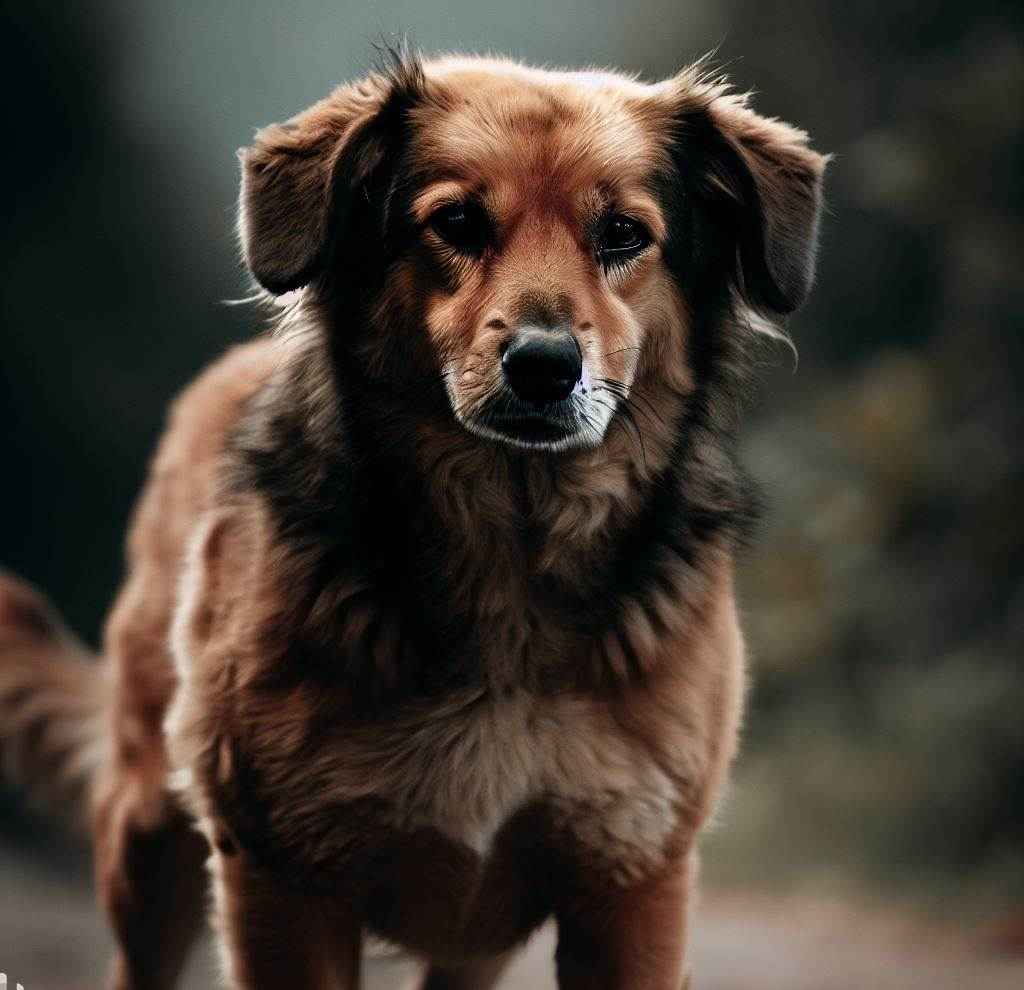How Do Dogs Have Periods?
Answer to the question Do Dogs Have Periods? Nothing like humans. They occasionally go through estrus or heat cycles the dogs do not have monthly cycles. They have bigger vulvae and discharge more often during estrus. No, dogs do not have periods or bleed in the same way that humans do. Female dogs go through a reproductive cycle known as the estrous cycle or heat cycle which is different from the human menstrual cycle. During this cycle a female dog’s body goes through various hormonal changes to prepare for potential pregnancy.
One of the most noticeable signs of a dog in heat is vulvar swelling and discharge but it is not the same as human menstruation. The discharge is typically clear or slightly bloody and is a sign that the dog is fertile. This discharge is not a result of shedding uterine lining like in humans. Unlike humans who have a monthly menstrual cycle the dogs heat cycles vary by breed and size are typically occurring every 6 to 12 months. The duration and intensity of the heat cycle also differ among individual dogs.
Whereas female dogs do not have periods or menstruation as humans do so, their reproductive cycle does share certain parallels with the human menstrual cycle. If dog owners do not want to breed their pet then they must be aware of the symptoms of their dog’s heat cycle and take the necessary precautions.
Do Dogs In Heat Bleed?
No, when a dog is in heat they do not bleed as a person would. When a female dog is in heat then it means she is going through her reproductive cycle is also known as the estrous cycle. During this time there can be some vaginal discharge but it is not the same as menstrual bleeding in humans. Even though dogs do not have periods as people do and the estrus cycle can nonetheless result in bleeding in them. The blood will be light at first but as the cycle continues it might thicken and seem more crimson. You can also know about Do dogs menstruate?
You should be prepared to witness some swelling around her vulva at this time. The discharge from a dog in heat is typically straw-colored to slightly bloody and can vary in amount. It is a result of hormonal changes that prepare the dog’s body for potential pregnancy. This discharge contains pheromones that signal to male dogs that she is fertile, which is why male dogs may be particularly interested in a female in heat.
The discharge is not a continuous flow of blood like a human period. It is a normal, minor part of the reproductive process. The important thing for dog owners to be aware of the signs of their dog’s heat cycle given that it can last for several weeks and that caution should be used if breeding is not the owner’s aim. During this period it is also a good idea to keep the dog clean and provide her the proper attention.
How Long Do Female Dogs Bleed For?
Larger dogs frequently bleed more than smaller dogs so, this varies across breeds. Female dogs do not experience bleeding in the same way humans do. Instead, they go through a reproductive cycle called estrus or “heat.”. During this cycle which typically occurs every 6 to 12 months there is a discharge from the dog’s vulva but it is not continuous bleeding like a human period. The dog will only go through roughly half of the cycle usually 7 – 10 days. Female vulva may also be large, red or bloated with some bloody-looking bleeding or discharge
This discharge can vary in color from clear to slightly bloody and is a sign that the dog is fertile. The discharge duration in dogs varies but typically lasts 2 to 4 weeks, with the initial phase, called proestrus, lasting 1 to 2 weeks for marking the start of the discharge cycle. This is followed by the estrus phase which is the fertile period by lasting around 1 to 2 weeks. After that, there’s a diestrus phase where the discharge gradually decreases and eventually stops.
Dog owners should monitor female dogs during breeding season to prevent unwanted pregnancies and ensure proper breeding plans. Maintaining cleanliness and comfort is crucial for a dog’s well-being and if you have concerns about their estrus cycle so, consult a veterinarian.
Why Do Dogs Have Periods?
The estrous cycle, which occurs twice a year and is governed by hormonal fluctuations, is the distinct reproductive cycle that dogs have. This cycle which enables dogs to become receptive to mating and pass through the diestrus phase before reverting to anestrus a time of reproductive inactivity, is a normal aspect of a dog’s reproductive system.
Female canines do not go through menstruation or lose their uterine lining as humans do. Rather, they exhibit behaviors, vulva enlargement and bloody discharge indicative of being in heat. See a veterinarian if you are worried about your dog’s reproductive health or would like to avoid unplanned births.
Do Dogs Have Periods Like Humans?
The estrous cycle in dogs does not follow a monthly pattern that it can vary in frequency and typically occurring every 6 to 12 months. Additionally, the duration and intensity of the cycle can vary among individual dogs. While there are similarities between the reproductive cycles of dogs and humans that dogs do not have periods like humans do. The dogs periods are not like humans.
Every 6–12 months for adult female dogs and every 4-6 months for puppies so, dogs go through their heat cycles which enable them to procreate and have fertile times that can be sparked by vaginal discharge or bleeding. No, dogs do not have periods like humans. While both female dogs and humans have reproductive cycles so, they are fundamentally different. In humans the menstrual cycle involves the shedding of the uterine lining which resulting in menstrual bleeding that typically occurs monthly.
This is a crucial part of human reproduction allows the body to prepare for potential pregnancy. Female dogs have an estrous cycle which is characterized by vulva discharges which are not menstrual hemorrhages but rather warnings of potential mating. These discharges are caused by hormonal changes rather than uterine lining removal and can vary in color typically being clear or slightly crimson.
Do Dogs Have Periods Every Month?
Female dogs do not cycle monthly and only bleed once every six to eight months during breeding season. They do not bleed or discharge between breeding seasons due to the unique differences between a dog’s and a human’s uterus. Dogs do not have monthly periods like humans, but rather undergo a reproductive cycle called the estrous cycle, which can vary significantly across breeds and individuals.
Female dogs do not cycle on a monthly basis, but they do bleed once every six to eight months during breeding season. This is due to the unique differences between a dog’s and human’s uterus, which prevents bleeding or discharge between breeding seasons. The female dogs have their first heat cycle around six months of age but this can vary. After the initial cycle the subsequent cycles may occur every 6 to 12 months and again depending on the dog. The entire estrous cycle usually lasts about 2 to 4 weeks. During the estrous cycle, female dogs exhibit various signs, including vulvar swelling and a discharge that may range from clear to slightly bloody.
These are indications of their fertility and receptiveness to mating but are not the same as the monthly menstrual bleeding in humans. It’s essential for dog owners to understand their pet’s individual cycle as they can vary and if breeding is not intended but precautions should be taken to prevent unwanted pregnancies. Monitoring your dog’s health and consulting with a veterinarian is advisable for proper care during this phase.
Facts & Features Of Dogs:
- Dogs are domesticated animals for thousands of years that had evolved into productive partners due to their history and cooperative nature.
- Dogs have remarkable hearing and they are capable of detecting sounds at frequencies as high as 65,000 Hz, and communicate through various vocalizations like barking, growling, howling, and whining.
- Each vocalization carries distinct meanings which allows dogs to convey their needs and emotions effectively.
- There is incredible diversity in dog coat type, from the sleek and short fur of Greyhounds to the long and fluffy coats of Siberian Huskies. These coats serve various purposes including insulation, protection from harsh weather and camouflage.
- Just as humans have unique fingerprints each dog has a distinctive nose print.
- The patterns of ridges and creases on a dog’s nose are so unique that they can be used for identification, much like human fingerprints.
- These unique facts and features of dogs highlight their remarkable adaptability, sensory abilities, and the rich history of their companionship with humans.
- They continue to be cherished and valued members of households worldwide.




